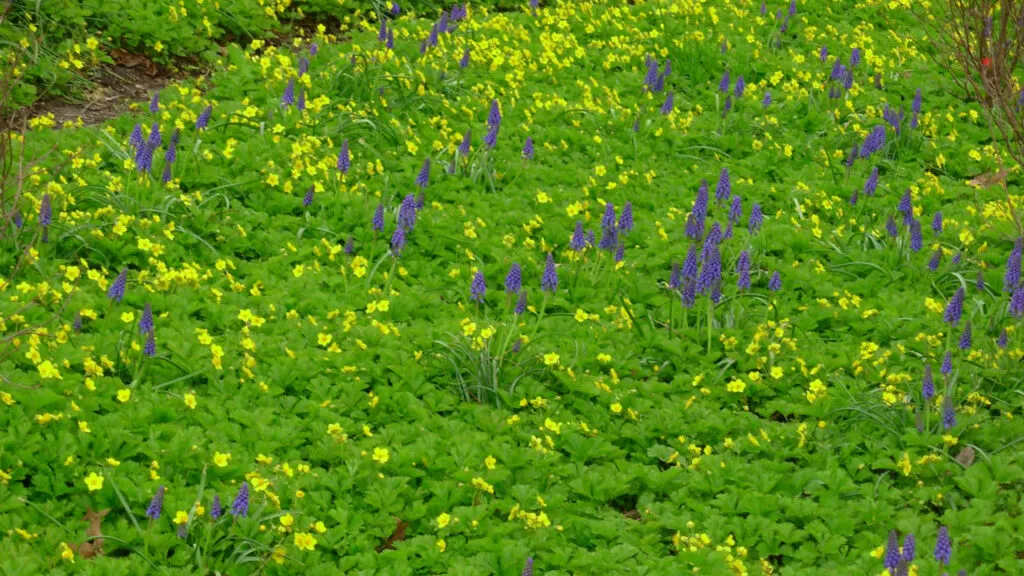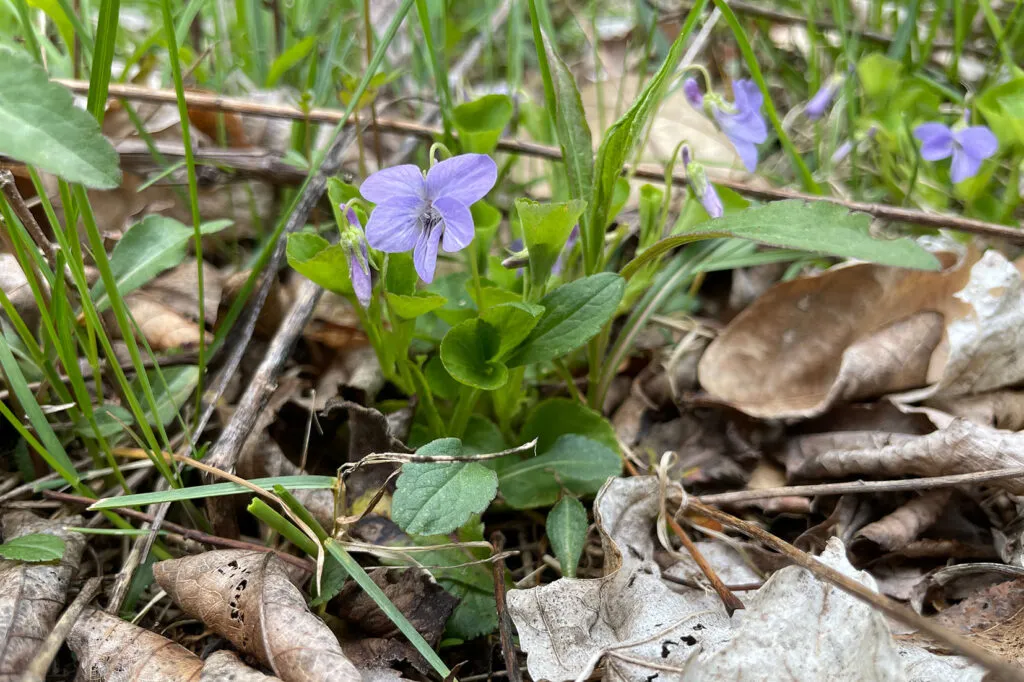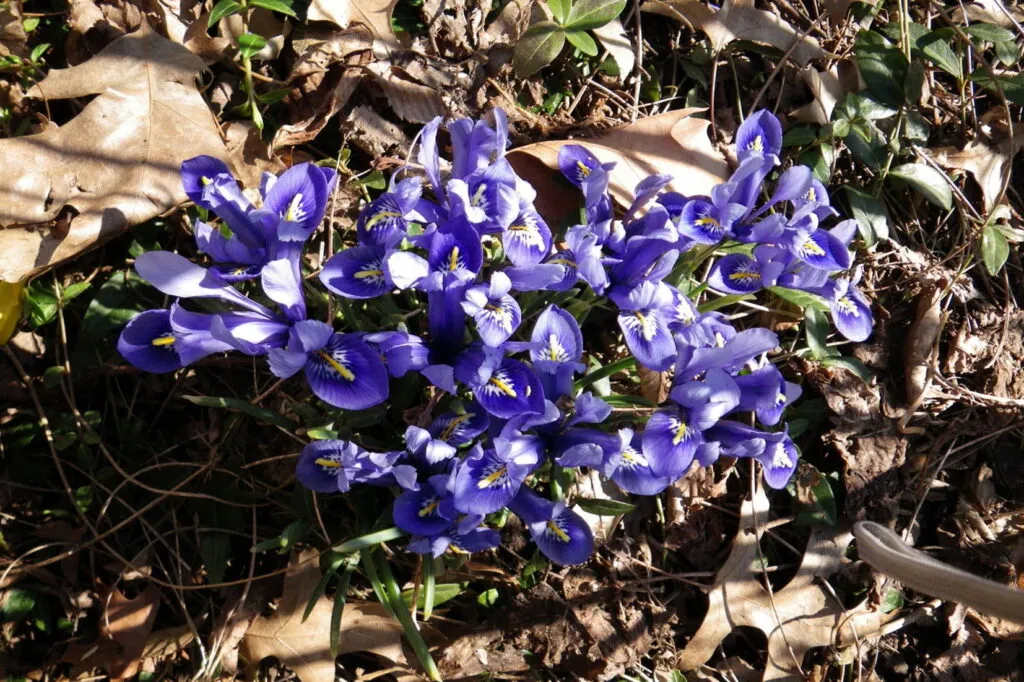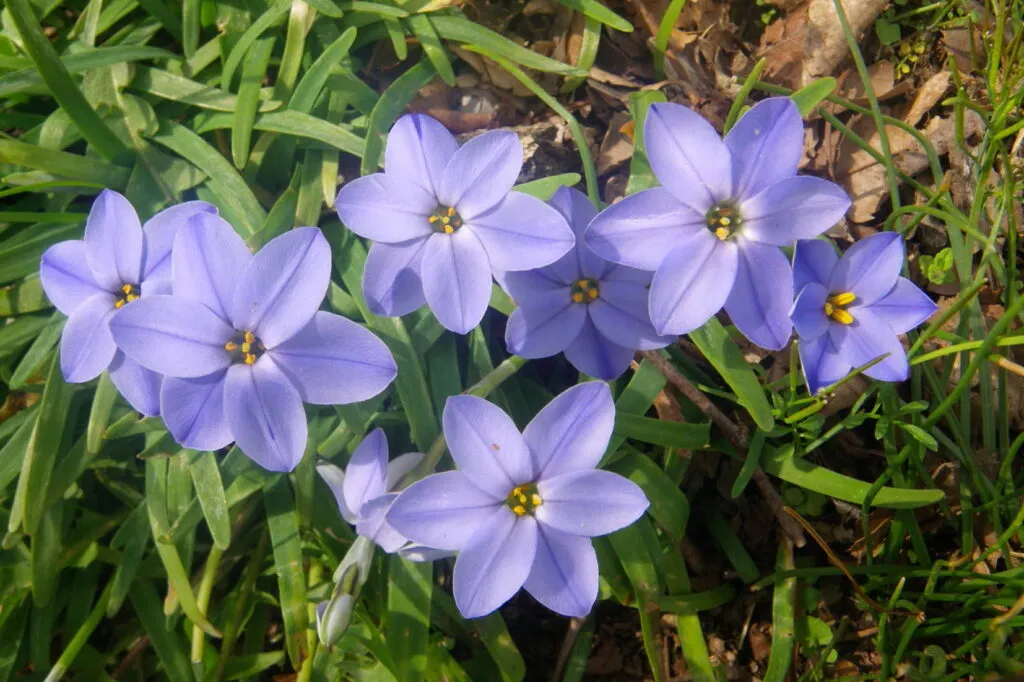
Our native woodlands abound with flowers in early spring, before mid to late May, and yet native meadows generally are relatively lackluster from a bloom standpoint. While we at LWLA pride ourselves on creating native landscapes we also find it useful to, occasionally and in very specific circumstances, draw from the significant pool of ecologically neutral (or even beneficial) non-native plants on offer. There is no group of plants this is truer of than ephemeral spring bulbs.
Although there are some early spring blooming native plants for full sun locations, they tend to be small, difficult to source in the nursery trade, and as a result hard to plant in large enough masses to create a visible aesthetic effect. Some examples of these include Antennaria sp. (Pussytoes), Houstonia caerulea – (Azure Bluets), Pedicularis canadensis (Wood Betony), and some of the Viola sp. (Violet). One example of these includes Viola labradorica; however, the true V. laboradorica which is native is not the purple-leaved plant most often found in the nursery trade. The purple-leaved plant in question is in fact the non-native V. riviana var. purpurea, a Eurasian species that somehow made it into the nursery trade mislabeled as V. laboradorica (a mistake which has never been rectified). It’s also worth noting that even the earliest flowering native meadow plants are generally much later to bloom than non-native bulbs.

In our practice we try to use a deft hand in rare instances where we use non-native species, and this is equally true with bulbs. Generally, we use non-native bulbs in gardens or areas most associated with houses, buildings, orchards, or high human use and not in natural areas where they might have the potential to naturalize. While some non-native bulbs can be found as naturalized species out in the landscape, few are recognized as invasive or displacing native species. That said, we do our best not to add to their spread into natural areas. We also tend to use bulbs that bloom before most native species and use native plants only for later season blooms. In this way we maximize both the aesthetic and ecological value of non-native bulbs when they are not in competition with native species.

While a wide range of bulb species are conventionally cultivated there are ones we tend to eschew. For instance, Tulips and Hyacinths both are often browsed by deer and generally don’t reliably come back after the first few years of flowering, so we tend not to use them. Similarly, we avoid some of the larger more traditional Narcissus species (‘Dutch Master’, ‘Mt. Hood’, etc.) as they have abundant, broad, strap-like leaves with a long and less desirable presence in the landscape before senescence. But we douse smaller, more narrow-leaved varieties (‘Minnow’, Thalia’, etc.) more frequently to minimize their presence in the landscape once they have finished blooming. This is true for non-Narcissus bulbs as well; we use smaller, early blooming, narrower-leaved varieties that give color when needed but quickly recede once taller growing natives are more leafed out.
There also is the option of using bulbs to highlight native species. For instance, interplanting Muscari armeniacum (Grape Hyacinth) and Waldsteinia fragarioides (Barren Strawberry) offers a lovely color contrast. As they bloom concurrently, the blue /purple flowers of the Grape Hyacinth offer a soothing counterpoint to the cheery yellow blooms of the Barren Strawberry. As well, the Grape Hyacinth leaves being both short and narrow recede readily into the lustrous green foliage of the Barren Strawberry when flowering is complete.

Some preferred non-native bulbs LWLA utilizes include: Camassia leichtlinii (Leichtlin’s Camass), Crocus tommasinianus (Snow Crocus), Crocus vernus (Spring Crocus), Galanthus nivalis (Snowdrops), Ipheion uniflorum (Spring Starflower), Iris reticulata (Reticulated Iris), Muscari armenicum (Grape Hyacinth), Narcissus ‘Minnow’, Narcissus poeticus (Pheasant’s Eye), Narcissus ‘Thalia’, and Scilla siberica (Siberian squill).
While non-native bulbs are not crucial to native insect survival (and in truth most Narcissus varieties have very little pollinator value at all) many of the straight species varieties are utilized for pollen and nectar by early emerging native bees as well as honey bees.
In short, while not appropriate for every landscape situation, non-native bulbs can help brighten sunny gardens from March through early May when few native meadow species are providing much in the way of flowers.